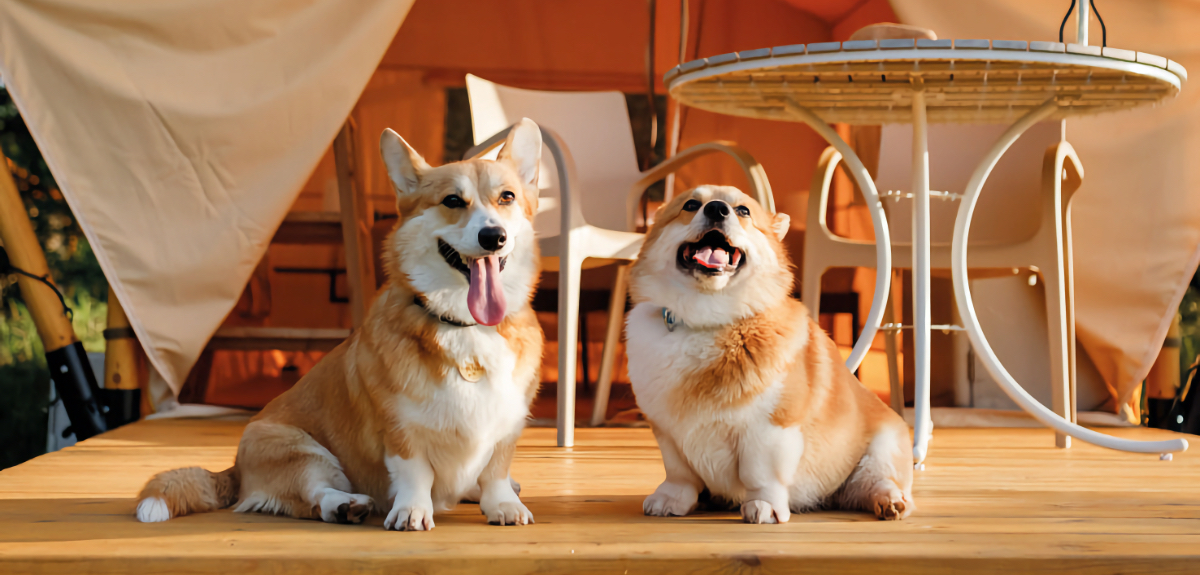The Best Ways to Make Your RV Cat-Friendly
Help Your Cat to Feel Safe, Happy, and Secure with These Handy Tips.
Image Caption: Image Courtesy of Anetlanda/Getty
Pet owners know how difficult it can be to leave their furry friends behind while traveling. Even when we find someone to care for them in our absence, we still worry about their well-being and how they are coping without us. And just like any other member of the family, we miss them terribly while we’re apart.
One of the best parts of traveling by RV is that we can comfortably bring our pets with us when we hit the road. For dogs, that usually means just opening the door and inviting them inside, as our canine companions are almost always down for a road trip. On the other hand, cats often require a bit more coaxing, as they are usually less excited about going for a ride. But with some preparation, planning, and patience, the feline members of the family can be comfortable and happy in an RV, too, allowing them to join us on our adventures.
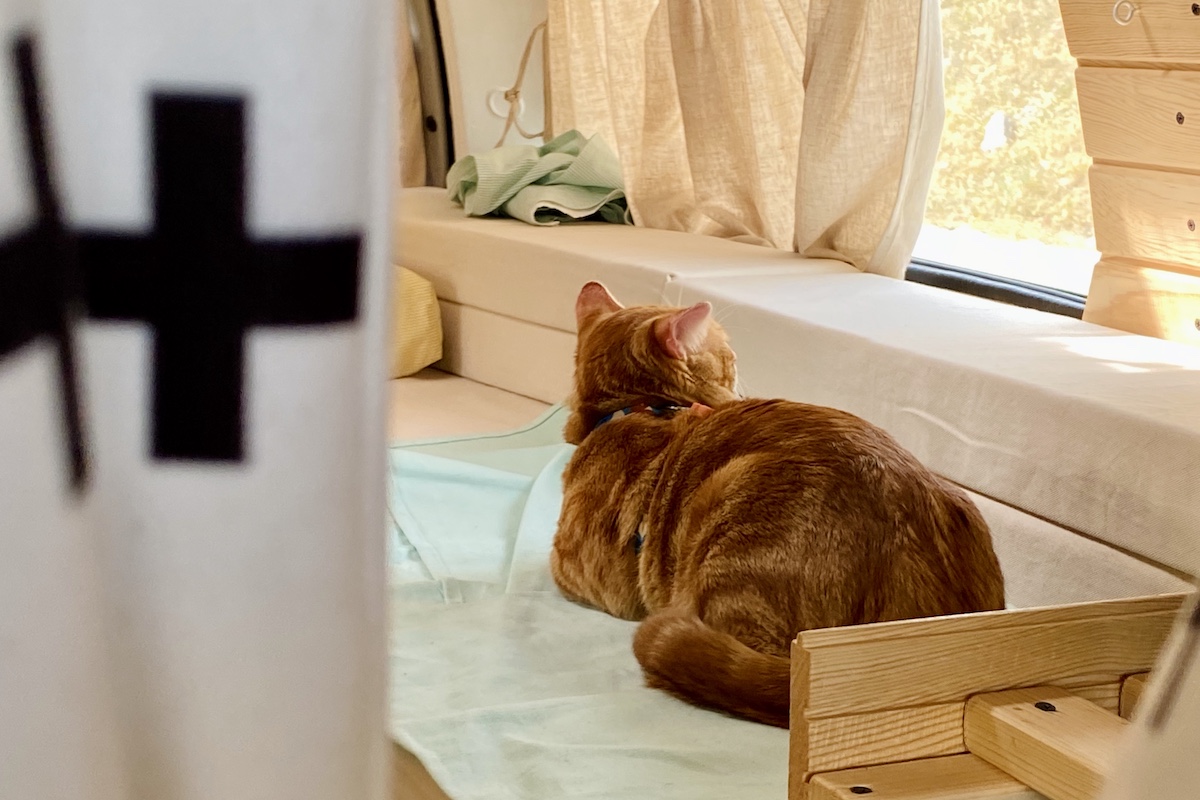
Image Courtesy of Beyza ISIK/Getty
Getting Comfortable
Before setting out on an RV trip with your cat, it is a good idea to let them get comfortable inside the vehicle first. While they are sure to be curious about this new environment, they’ll likely be nervous and possibly somewhat frightened as well. Allowing your cat to explore at their own pace will give them time to familiarize themselves with the interior and find a comfy corner that they can call their own.
It may take several visits to the RV before your cat starts to settle in, but soon they’ll feel right at home. Once they are comfortable, consider taking them out for a ride to help them acclimate to a moving vehicle. Cats tend to be more susceptible to motion sickness than dogs, so go slow at first and keep the rides short. Over time, they’ll become accustomed to the sound and feel of the vehicle in motion, making it easier to drive long distances.
If you’re traveling in a Class A, B, or C RV, your cat will be able to move about the interior space while driving if they feel comfortable doing so. Some cats will find a spot where they feel relaxed and lounge there just as they would at home. Others may become agitated or uncomfortable due to the moving vehicle and will look for a place to hide instead. Placing them in a pet carrier can provide a sense of safety and security that can be reassuring while driving.
If your RV happens to be a tow-behind model, don’t leave your pet inside the trailer while driving. This can be very dangerous for the animal, and they won’t have you with them to provide a calming presence. Instead, make a safe spot for them inside the vehicle that is pulling the trailer so you can keep them close at all times.
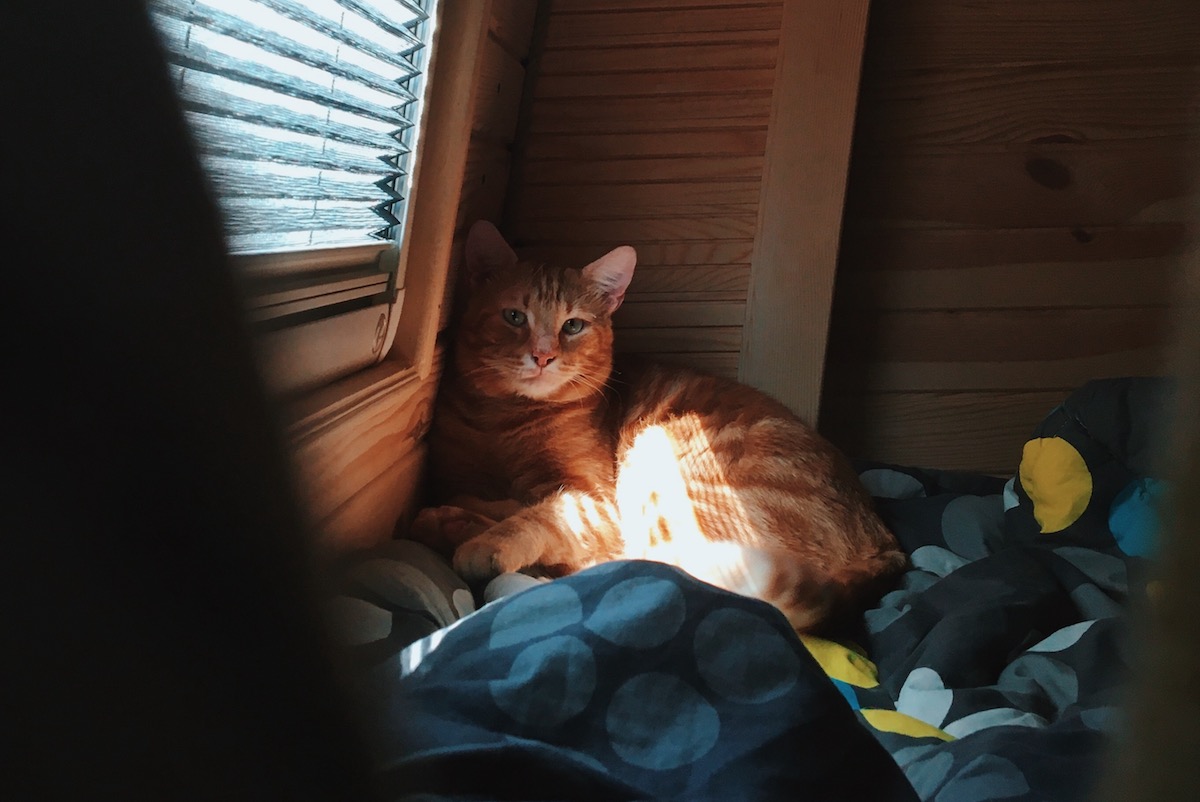
Image Courtesy of Beyza ISIK/Getty
Creature Comforts
Once your cat feels comfortable inside your RV, it’s time to create a space that they can call their own. Pay special attention to the places in the vehicle that your pet naturally gravitates toward as they become accustomed to the interior. Since they’ll likely be spending much of their time in those same spots while traveling, you’ll want to make sure they are as cat-friendly as possible.
Some cats may like to ride on the dash or sit in a seat that allows them to look out the window. Others may prefer to hide under a bench, inside a cabinet, or even a pet carrier. You can make them feel further at home by adding a favorite bed, pillow, or blanket to that space. This step will provide a sense of familiarity and comfort that will help put them at ease and make the travel experience a better one for everyone.
The location inside your RV where your feline friend is most comfortable may change once you reach the campsite. When the vehicle is no longer in motion, your cat is more likely to move about the living space and lounge in several places just like they would at home. Move any beds or blankets to these spots to further accommodate their needs.
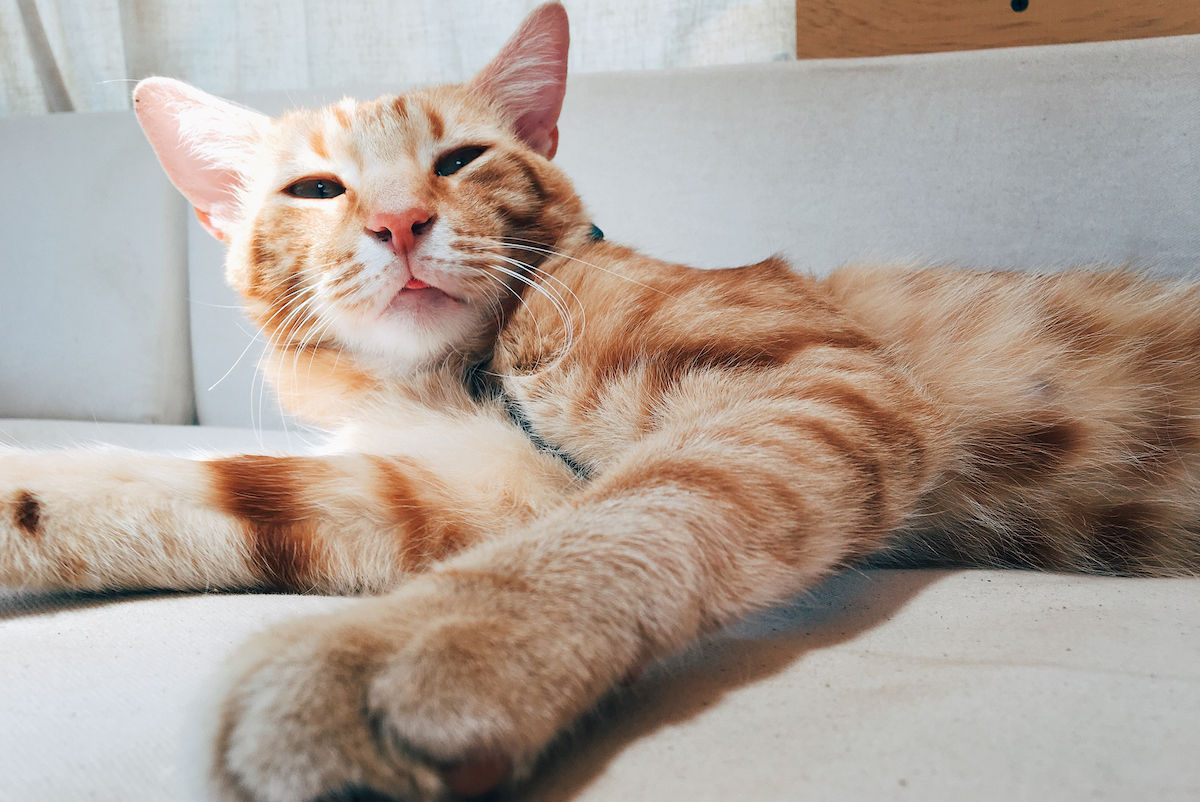
Image Courtesy of Beyza ISIK/Getty
Provide an Escape Pod
Sometimes when a cat gets nervous or frightened, they like to retreat into a hidden space where they can feel safe and protected. At home, that might be under a bed, inside a closet, or behind a piece of furniture. The options aren’t as plentiful in an RV, although providing them a “panic room” of sorts can be just as important.
If your cat seeks out a hiding place when they feel uncomfortable, providing such a space in your RV may be beneficial. An empty cabinet works well, as does a lofted sleeping area. Depending on the layout and type of furniture inside your RV, there may be room under the couch, dinette, chair, or bed. Any of those places will serve as their panic room when needed.
When your cat finds their preferred hiding place, make it as comfortable as possible for them. Putting familiar items—such as toys or a blanket—into that space will help your pet to relax until they are ready to venture out once again. Most importantly, they should be allowed to escape to this hidden place whenever they feel the need as it will enable them to become more comfortable as time passes.

Image Courtesy of Irina Nedikova/Getty
Food and Water
Establishing a place for your cat to eat and drink will be another critical step to helping them feel comfortable. Locate a spot inside your RV where you can place their food and water dishes while at the campsite. Using the same bowls that they use at home will once again bring a sense of familiarity that will be calming. Placing a pet mat under those bowls will help keep the RV clean as well.
While driving, safely pack away the cat dishes to ensure they aren’t sliding around inside the vehicle. Most cats won’t want to eat or drink while the RV is in motion, but if you make a pitstop, they may be interested in having a snack or drinking some water. Keep the bowls, treats, and water supply close at hand so they are available when needed.
If your cat happens to experience motion sickness while driving, plan its meal schedule accordingly. Be sure to give it plenty of time to let its stomach settle after a meal before hitting the road. This will help you avoid cleaning up after them and help the cat feel more comfortable throughout the ride.
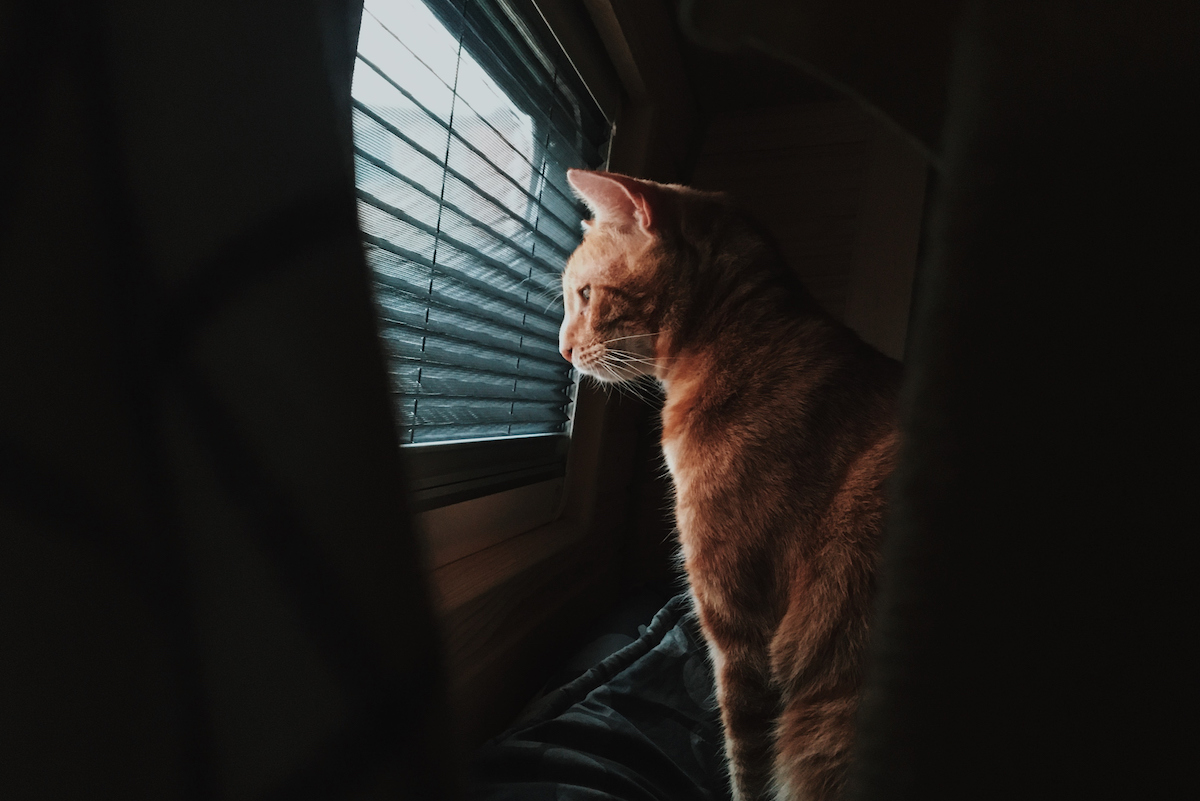
Image Courtesy of Beyza ISIK/Getty
Find a Place for the Litter Box
One of the most challenging aspects of RVing with a cat is deciding where to put the litter box. Your pet will naturally be drawn to the litter when nature calls, but place it somewhere that is easily accessible and private. Finding a location that can help with odor control without inhibiting your ability to clean it regularly is also essential.
Many RVers who travel with cats place the litter box inside the vehicle’s shower stall. This contained space provides the privacy that cats often need while remaining easy to access for quick clean-up. Additionally, most of the litter will collect on the shower floor, where it can wash away rather than get tracked all over the RV.
Other options include stashing the litter box inside an unused cabinet, under a bed, or in the unused space behind the stairwell. Some do-it-yourselfers will modify their RVs to make room for the litter or use an existing space originally intended for something else. Either way, make it easy for the cat to get to the box whenever necessary.
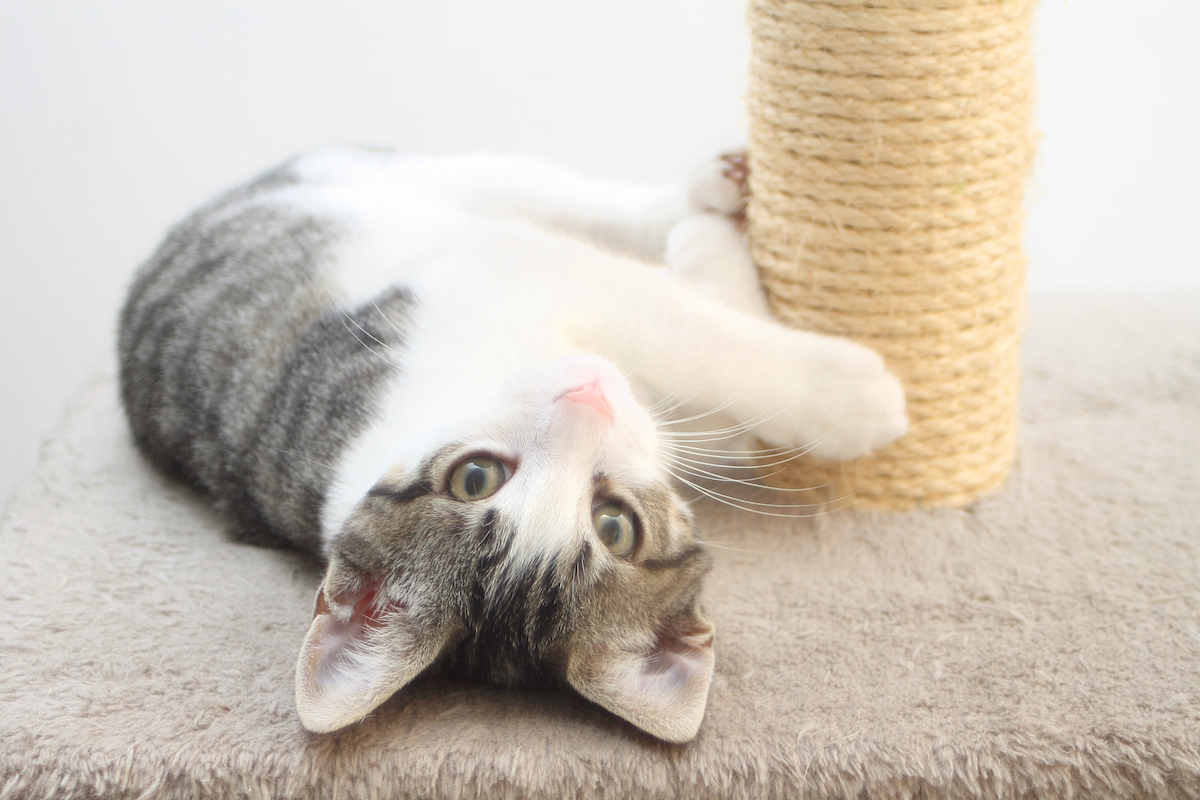
Image Courtesy of rossella cerisola/Getty
Cat Scratch Fever
Cats have a natural tendency to want to scratch things, particularly when feeling excited or stressed. While traveling with you in your RV, there is a good chance your pet may feel both of those emotions, and the last thing you want is to have them tearing up the furniture or upholstery. Just like at home, you can avoid that by providing them with a scratching post to sink their claws into instead.
Bring a scratching post, and when stopped at a campsite, place it in a prominent position inside the RV. Your cat should naturally gravitate to it when they feel the need, although a few gentle reminders as to what can and can’t be scratched may be necessary. By providing them with an outlet to express their emotions, you’ll have a better chance of keeping your cat happy and keeping the furniture looking good.
Cats can make excellent travel companions, provided we respect their needs and create an environment that feels safe and comfortable. By prepping your RV ahead of time and slowly introducing your cat to the environment, you’ll soon find that your furry buddy is right at home at the campsite. You’ll also find that having them with you makes your experience so much more enjoyable too.

